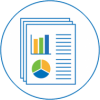Market Insights: Recycled Polyolefins - 2021
This report provides analysis and forecast to 2035 of the global recycled polyolefins market, including supply by mechanical method and chemical processes and demand by product and end use.
Market Insights: Recycled Polyolefins - 2021 includes discussion regarding key market drivers and constraints, as well as demand analysis for nine regions: North America, South America, Western Europe, Central Europe, Eastern Europe, Middle East, Africa, Asia Pacific, and China. Analysis also includes the competitive landscape, capacity listing and cost competitiveness along with a snapshot of latest pricing trends by region and price forecasts to 2035.
Abstract:
The EU tax of €800 per ton on virgin polymers used in packaging was introduced in January 2021. The EU tax will incentivise use of recycled material. From April 2022, the UK will introduce a similar plastic packaging tax of £200 per ton for packaging with less than 30% recycled content; however there will be an exemption for manufacturers and importers of less than 10 tons of plastic packaging per year. No other regions have yet followed.
Plastics use in other applications has attracted no taxation so far. Use in personal protective equipment (PPE) somewhat redeemed the public perception of plastic during the COVID pandemic. Recent low oil prices have made recycling economics more challenging, and COVID-19 contamination concerns and labour restrictions have reduced collection and sorting capacity that is already structurally constrained.
Limited availability of post consumer resin (PCR) is renewing interest in bio-feedstock and chemical process as a means to meet brand sustainability objectives. There are around 50 technologies currently under development for the conversion of waste plastics to basic hydrocarbons, ranging from solvents/waxes to synthetic crudes, transportation fuels and importantly cracker feedstock.
The applications for mechanically recycled polyolefins are limited due to deteriorated properties although it can be improved to a certain extent by use of compatibilizers and blending with virgin material. For example, use in food packaging is prohibited by the EFSA and FDA regulations but increasing demand is found in stretch film for industrial and agricultural uses etc. Recycled polyolefins use in non-standard applications such as plastic lumber and will not erode virgin demand.
A combination of legislation, taxes, consumer pressure/brand owner response drives growth in recycled polyolefins, which also depends on competitive economics and efficiency in resource recovery and greenhouse gas emissions. Adoption of a circular model for the plastics value chain is expected to be gradual.
 Markets and Profitability
Markets and Profitability  Technology and Costs
Technology and Costs  Special Reports
Special Reports